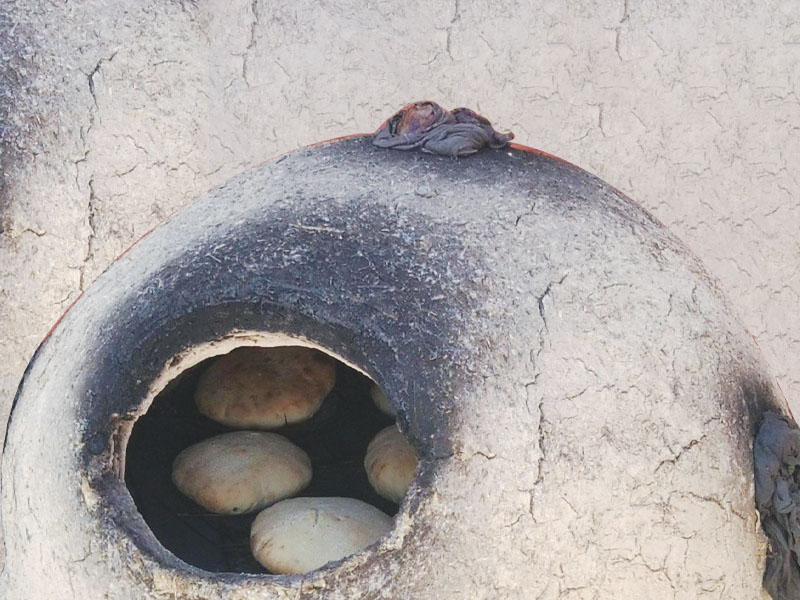Clay hearths for baking bread
Issue 26

Clay hearths, regardless of their use and function, are one example of the many inventions that allow man to contain and control fire for use in daily life. Clay hearths were used as early as the Middle Palaeolithic age (100000 – 40000 BC), and evidence of clay hearths was found a very long time ago at Klisoura Cave, an archaeological site in southern Greece. Remains of clay hearths that date back to the Upper Palaeolithic (40000 – 20000 BC) have also been discovered.

In the Levant countries, the oldest evidence of human knowledge of clay hearths dates back to the beginning of the Neolithic Age (c. 8500-4500 BC); several shards of a Tabun hearth were found during archaeological excavations in Basta, southern Jordan. Archaeologists are still discovering such shards. This proves that clay hearths existed during the aforementioned periods.
Throughout the ages, the Levant countries used different types of clay hearths such as Tannur and Waqqadiyah in addition to Tabun hearths. Each hearth had its own characteristic raw material and purpose. Each area had its own type of clay hearth; the Tabun was common in mountainous areas of Jordan, while the Waqqadiyah was commonly used in valleys. This can be explained by the climate and type of firewood in the different areas. In some parts of Syria, the Tabun and the Tannur were used side-by-side in the same house.
When we compare the remains of clay hearths found in archaeological sites to today’s clay hearths, there are a number of commonalities in terms of shape and raw materials. This indicates the continuity of the culture of villagers in these areas.
While the manufacture and use of clay hearths such as Tabun and Waqqadiyah are dying out, Tannur hearths are still used at modern bakeries and restaurants. This is primarily a result of the different types of fuel used; Tabun and Waqqadiyah use solid fuel that is no longer available due to the decline in traditional agricultural activities, but Tannur can use gas.
Dhayfullah Ubaydat
Jordanie


































































